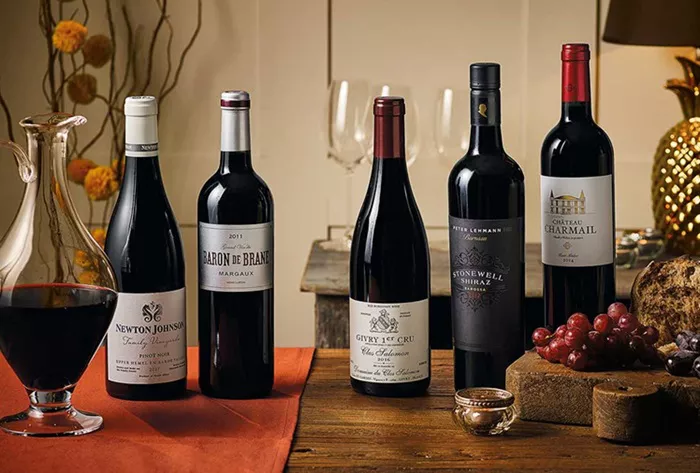In the world of sparkling wine, success is a fluid concept that evolves over time. While some iconic brands like The Rolling Stones and Microsoft manage to adapt and innovate while maintaining their legendary status, others, such as Britney Spears and Elon Musk, face challenges that leave fans uneasy.
Over the past two decades, both Champagne and California sparkling wine have thrived, producing a diverse array of high-quality offerings that are enjoying unprecedented global popularity. Despite their distinct origins, these two regions share similarities, particularly in the traditional methods employed by California vintners using Champagne grapes, primarily Pinot Noir and Chardonnay.
Historically, the French and Californian wine industries have navigated a relationship marked by mutual admiration and rivalry, which has driven both regions to achieve new heights. California often looks to France for production techniques, while France has adopted California’s innovative hospitality and marketing strategies. This synergy has fueled the growth of both Champagne and Méthode Traditionelle California wines over the last two decades. However, as they look to the future, many producers are shifting their focus from aggressive expansion to a more sustainable evolution.
A Snapshot of Growth
To understand the current state of these markets, it’s essential to examine their growth patterns. In Champagne, production has steadily increased from 293.5 million bottles in 2003 to 299 million in 2023, according to the Comité Interprofessionnel du Vin de Champagne. This follows a historical trend, with production nearly doubling from 93.98 million bottles in 1969 to 184 million in 1979.
Despite the steady growth in volume, the value of Champagne cuvées has significantly risen, particularly in export markets, leading to record sales of €6 billion worldwide in 2023. California, meanwhile, has seen its production levels surge from 75 million bottles in 2002 to 150 million today, although this growth is stabilizing. Vintners are now concentrating on enhancing the value of their offerings rather than merely increasing production.
Rethinking Growth
The global context of growth is shifting. With the planet facing ecological constraints and a growing population of 8.17 billion people, unfettered growth is no longer viable. Champagne, with just 0.5% of the world’s vineyards, has established strict production limits, the last expansion occurring in 2008. In California, the absence of a designated sparkling wine region has led to vineyard reductions, with around 20,000 acres removed in recent years.
As producers in both regions reassess the merits of growth for growth’s sake, sustainability becomes paramount. Hugh Davies, winemaker and president of Schramsberg Vineyards, notes that the industry may be reaching its limits for continuous growth. “Perhaps it’s time to temper our ideas of growth. What’s truly sustainable for the planet and our business?” he states.
Producers are finding new avenues for growth through a more focused approach, leveraging the internet and social media to connect with consumers worldwide. “The world is getting smaller,” Davies explains, emphasizing the potential for exploring new expressions and styles.
In Champagne, producers like Alice Tétienne, cellarmaster at Champagne Henriot, affirm their commitment to quality over quantity, with no plans to increase production volumes. They aim to improve their offerings while addressing environmental concerns.
Adapting to Climate Change
Both regions face the challenges posed by climate change, albeit in different contexts. Arnaud Weyrich, senior vice president at Roederer Estate, highlights that California has experienced a lower impact from climate change compared to Europe. Nonetheless, the estate is pursuing aggressive sustainability initiatives, including solar power and eco-friendly farming practices.
Champagne Taittinger’s president, Vitalie Taittinger, emphasizes the need for adaptability, noting a 1.1 degrees Celsius temperature increase in Champagne over the past 30 years. As grape ripening accelerates, the industry must innovate to preserve the region’s character amid changing climatic conditions.
To combat these challenges, Champagne producers are exploring new grape varieties and sustainable practices while remaining vigilant about the constraints imposed by the Comité Champagne. This regulatory framework can hinder innovation, as Taittinger notes, “Innovation in Champagne is not an easy task.”
The Appeal of Unique Offerings
As consumers increasingly seek unique experiences, both Champagne and California sparkling wine producers are focusing on creating special cuvées. While the Champagne region benefits from its global recognition and marketing power, California wineries are making strides to showcase their long-aged sparkling wines, which can rival their French counterparts.
Cohen from Domaine Carneros emphasizes the importance of engaging visitors through educational experiences, highlighting the versatility of sparkling wines in food pairings. This strategy is crucial as tourism becomes an essential revenue stream for wineries, especially in California, which attracts over 25 million visitors annually.
Taittinger notes a significant increase in foreign tourist bookings in Champagne, prompting the region to enhance its visitor experiences through renovations and new offerings, thereby further solidifying its reputation in the global market.
Looking Ahead
Despite a challenging market landscape, the U.S. remains a vital market for both Champagne and California sparkling wines. Americans consumed 26.9 million bottles of Champagne last year, solidifying the country’s status as the largest market for domestic producers.
As the landscape continues to evolve, producers like Tétienne and Cohen are optimistic about refining their offerings to meet changing consumer preferences. While sales growth may become more challenging in the face of shifting demographics, the focus on quality and sustainability presents new opportunities.
In the end, the motto may shift to “less but better,” as producers adapt to market dynamics while maintaining their commitment to excellence. As trends ebb and flow, the demand for high-quality, sustainable sparkling wines will likely continue to flourish.
You Might Be Interested In:


